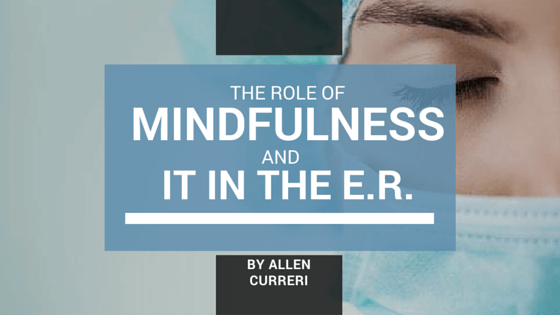Emergency Department (ED) physicians can change patients’ lives with a single diagnosis. To make accurate diagnosis and treatment decisions in the hectic ED, highly experienced physicians use both training and intuition (“hunches”), sometimes following intuitions instead of training when the two conflict (Coget & Keller, 2010). Now there is a third factor in this mix—information technology (IT) tools.
Innovative new IT products are appearing in EDs at a breakneck rate. But are these shiny new toys really leading to better medical care for patients? Our research suggests that the secret ingredient has to do with the mindset physicians adopt when they engage in the daily work of treating patients. To successfully juggle training, intuition, and technology, ED physicians need to be highly mindful.
Mindfulness is defined as the extent to which individuals are aware of their internal and external surroundings. In ED environments, mindfulness involves being aware of one’s own opinions and biases, as well as being consciously aware of main features and subtle details in each patient’s clinical context. Mindfulness has been linked to certain physician performance measures, especially patient-centered communication, so it is clearly a crucial characteristic for ED physicians.
But how does the introduction of information technology (IT) tools affect that mindfulness? Is it worthwhile for hospitals to invest in emerging IT tools in the ED, or would they be better served by investing in mindfulness training? Can IT tools help physicians to embrace mindfulness within the high-stress environment of the ED? These are some of the questions our research seeks to address.
Historically, investment in clinical IT tools, including apps designed to help doctors make the correct diagnosis and treatment decisions (“decision aids”), has yielded highly conflicting results (Cash, 2008). For example, at the hospital level, the highest performing institutions (in terms of mortality and readmission rates), do not use such IT tools at a greater rate than their lower performing counterparts (Williams, Asi, Raffenaud, Bagwell, & Zeini, 2015).
Our research confirmed that less experienced physicians tend to rely more on IT-based decision aids and algorithms learned in training, whereas more experienced physicians rely on these tools less frequently than on their own mindful intuitions. These findings encouraged us to explore the correlations between three dimensions of IT (IT use, IT access, and IT restrictiveness) and peer-rated performance, considering the role of mindfulness as a mediator.
We discovered that mindfulness dampened a negative relationship between IT use and mindfulness. In other words, mindful physicians use available IT tools differently, allowing them to realize the benefits of IT, whereas less mindful physicians may actually experience performance decreases with increased IT use. This tells us that emergency departments need to be very careful when they invest in shiny new IT tools that are supposed to help doctors perform better. If physicians don’t use IT tools mindfully, they may actually start to perform worse. Mindfulness training could bridge the gap between more IT screen time and better patient care.
We can also apply these findings to improving ED physicians’ training and designing better tools to aid their performance. Decision aids that promote mindfulness, for example by requiring situation-specific inputs before recommending courses of action, are likely to lead to larger gains in physician performance and therefore better returns on investment.
By combining the trait of mindfulness with thoughtfully designed IT-based decision aids, hospitals may be able to strengthen their ED physicians’ performance and improve the accuracy of their diagnoses. These improvements would, in turn, greatly benefit the patients who trust these physicians, sometimes with their lives, in emergency situations.
References


